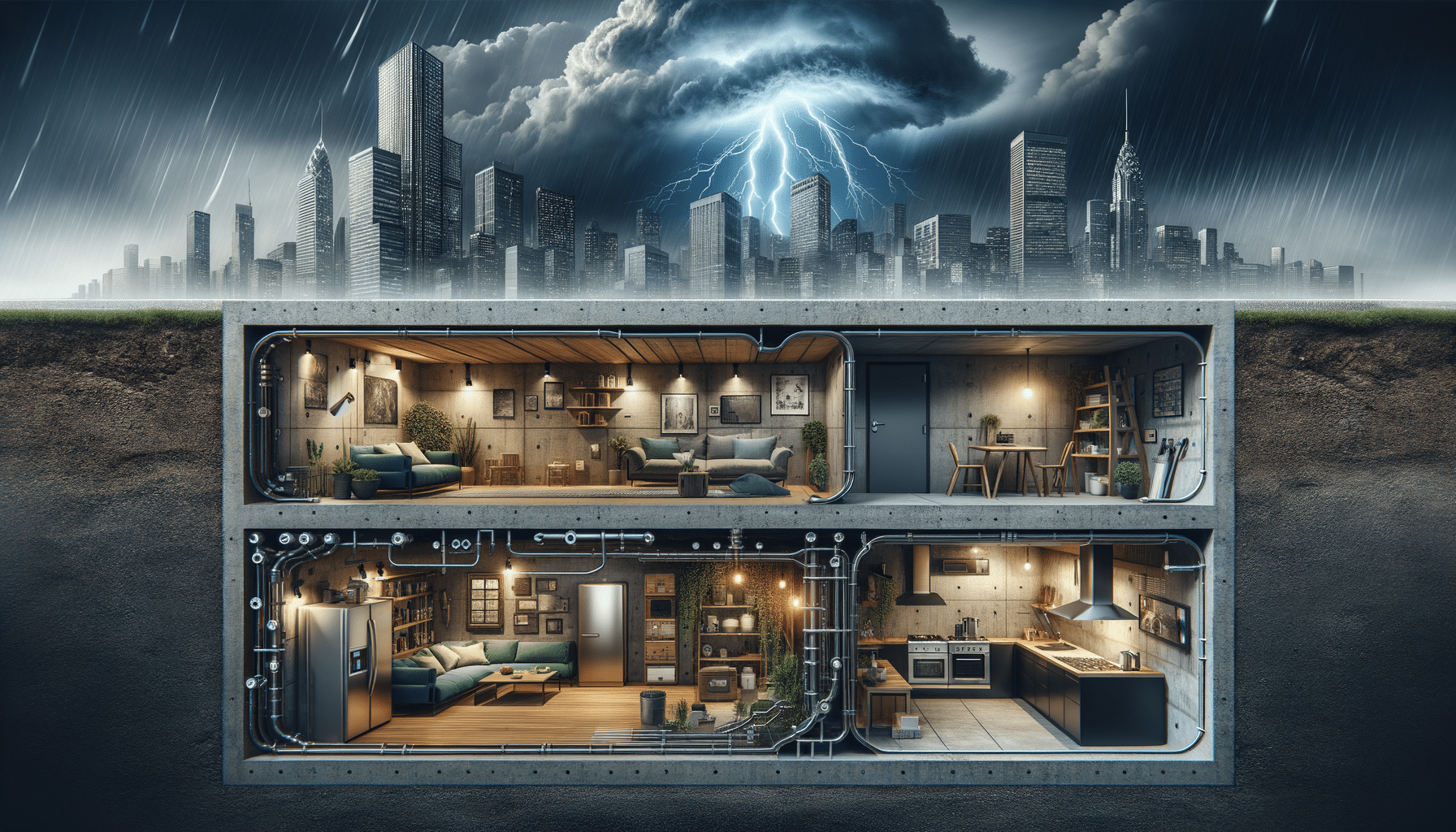
Innovative Storm Shelters: Combining Safety and Comfort
The Importance of Storm Shelters
Storm shelters have become an essential part of safety planning for individuals living in areas prone to severe weather conditions. These structures are designed to provide a safe space during extreme weather events such as tornadoes, hurricanes, and severe thunderstorms. The importance of having a reliable storm shelter cannot be overstated, as it can be a life-saving investment.
Storm shelters offer peace of mind, knowing that you have a safe place to go when the weather turns dangerous. They are engineered to withstand high winds and flying debris, which are common during severe storms. By having a storm shelter, families can ensure their safety and security during unpredictable weather events.
Moreover, storm shelters are not just about safety; they also add value to your property. In regions where severe weather is common, homes with storm shelters are often more appealing to potential buyers. This added value can make a significant difference in the real estate market, providing a return on investment for homeowners.
Types of Storm Shelters
There are various types of storm shelters available, each designed to meet different needs and preferences. The most common types include underground shelters, above-ground shelters, and community shelters.
Underground shelters are often installed below ground level, offering protection from high winds and flying debris. These shelters are typically made from reinforced steel or concrete and can be installed in a backyard or beneath a garage floor. Underground shelters provide excellent protection but may be less accessible during heavy rain or flooding.
Above-ground shelters, on the other hand, are installed at ground level and are easily accessible. These shelters are constructed from steel or concrete and are designed to withstand the same forces as underground shelters. They are ideal for individuals with mobility issues or those who prefer not to go underground during a storm.
Community shelters are larger structures designed to accommodate multiple families or individuals during a storm. These shelters are often found in schools, community centers, or other public buildings. They provide a safe space for those without access to a personal storm shelter.
Design and Construction of Storm Shelters
The design and construction of a storm shelter are critical to its effectiveness. A well-designed shelter should be able to withstand the forces of nature and provide a safe environment for its occupants.
Materials used in the construction of storm shelters play a significant role in their durability. Reinforced steel and concrete are commonly used due to their strength and ability to withstand high winds and flying debris. These materials are also resistant to corrosion and deterioration, ensuring the shelter remains effective over time.
The location of the shelter is another important consideration. Ideally, a storm shelter should be easily accessible from the main living areas of a home. It should also be located in a place that is unlikely to flood during heavy rains. Proper ventilation and lighting are also important factors to consider when designing a storm shelter.
Regulations and Standards for Storm Shelters
Storm shelters must adhere to specific regulations and standards to ensure they provide adequate protection. In the United States, the Federal Emergency Management Agency (FEMA) and the International Code Council (ICC) have established guidelines for the design and construction of storm shelters.
These guidelines outline the minimum requirements for storm shelters, including the materials used, the size and capacity of the shelter, and the level of protection it must provide. Adhering to these standards ensures that the shelter can withstand the forces of a severe storm and protect its occupants.
In addition to federal guidelines, many states and local governments have their own regulations regarding storm shelters. Homeowners should consult with local authorities to ensure their shelter meets all applicable requirements.
Choosing the Right Storm Shelter for Your Needs
Choosing the right storm shelter involves considering several factors, including the size of your family, your budget, and the specific weather threats in your area. It’s important to select a shelter that can accommodate all family members comfortably and provide the necessary level of protection.
When selecting a storm shelter, consider the following key points:
- Determine the capacity needed based on family size and any additional individuals who may seek shelter with you.
- Consider the location and accessibility of the shelter to ensure it can be reached quickly during an emergency.
- Evaluate the materials and construction of the shelter to ensure it meets safety standards and provides adequate protection.
- Research different types of shelters to find one that suits your preferences and needs, whether it’s an underground, above-ground, or community shelter.
Ultimately, the right storm shelter is one that offers peace of mind and ensures the safety of your loved ones during severe weather events.
Conclusion
In conclusion, storm shelters are a vital component of safety planning for those living in areas prone to severe weather. With various types and designs available, individuals can choose a shelter that fits their needs and provides the necessary protection. By understanding the importance of storm shelters and adhering to regulations and standards, homeowners can ensure their safety and security during extreme weather events.

